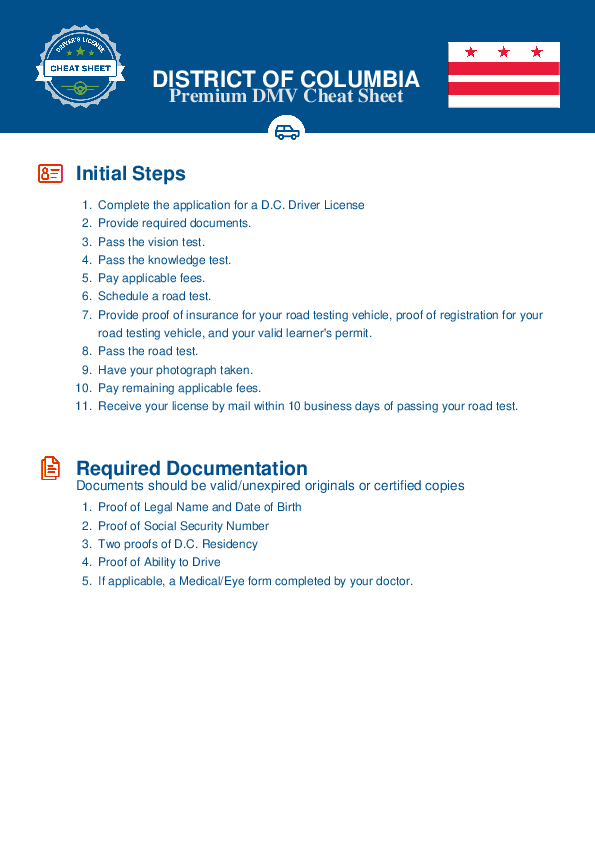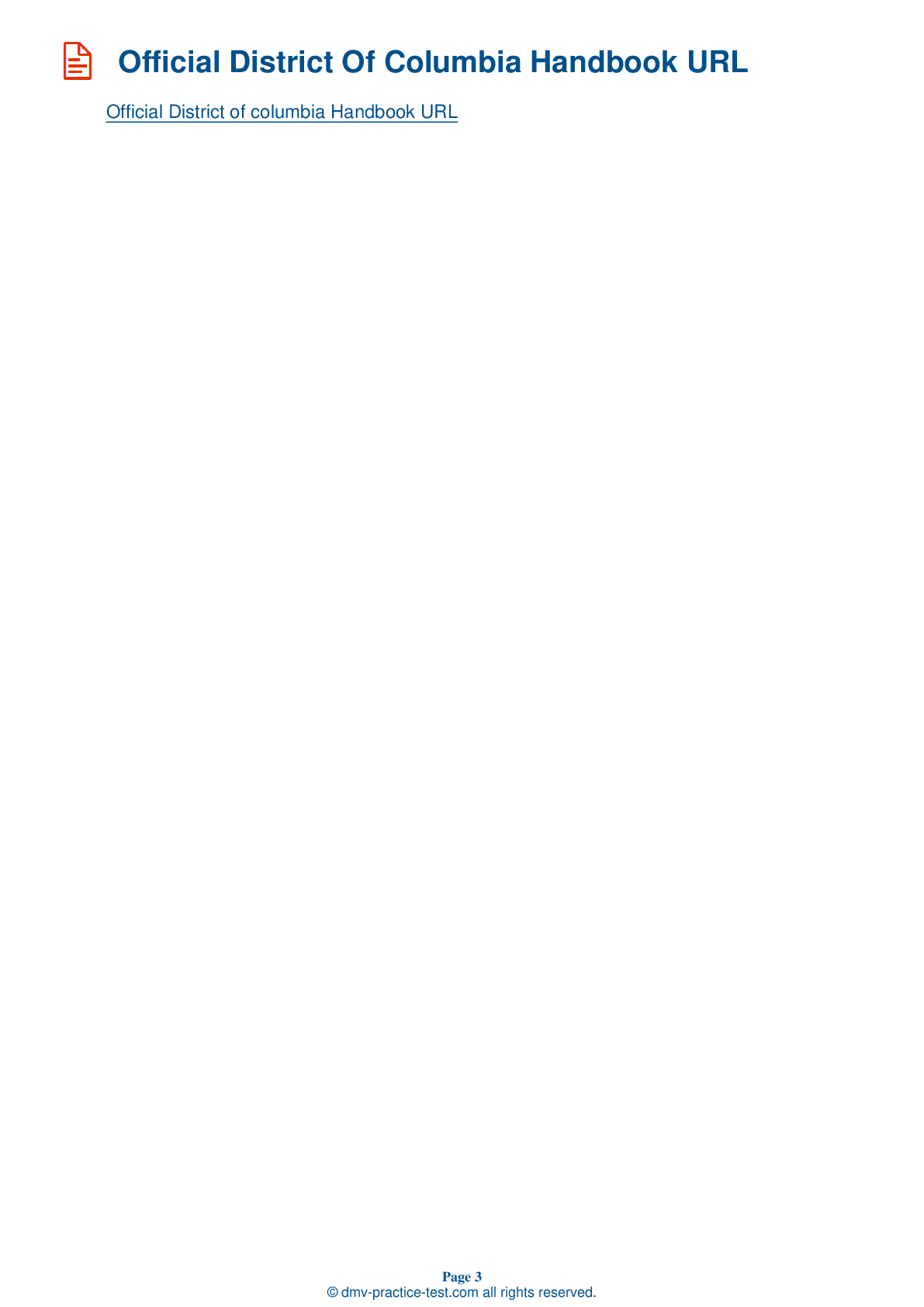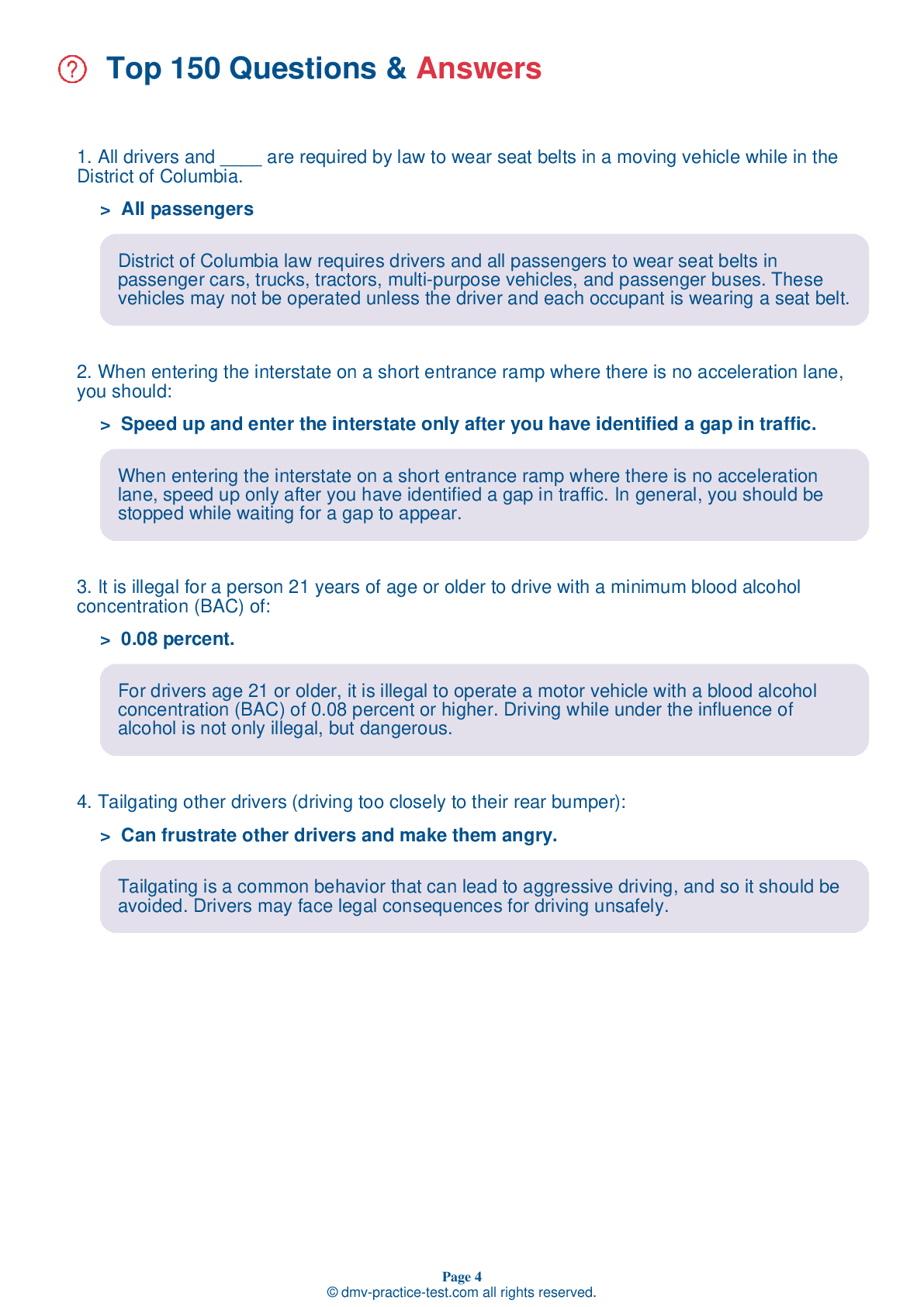FREE District Of Columbia DMV Practice Test #1
This set of District Of Columbia DMV practise tests was been updated for January 2026. It includes questions based on the District Of Columbia Driver Handbook's most significant traffic signs and laws for 2026. Use actual questions that are very similar (often identical!) to the DMV driving permit test and driver's licence exam to study for the DMV driving permit test and driver's licence exam.
On the practise exam, each question gets a tip and explanation to help you remember the concepts. The written component of the official DMV test will include questions about traffic rules, traffic signs, and driving statutes, as well as information from the Driver Handbook.
To achieve the required passing grade, you must correctly answer 20 of the 25 questions. Take our DMV practise exam to help you prepare for your District Of Columbia instruction permit or driver's licence.
The DMV exam is available in several languages.
Using any form of testing help will result in an automatic fail, and the DMV may take further action against your driver's licence, so avoid it.
1 . At intersections, crosswalks, and railroad crossings, you should always:
Any time you come to a place where people may cross or enter your path, or where one line of traffic meets another, you should look to the left and right sides of your vehicle to make sure no one is coming.
2 . You are driving on a highway divided by two solid yellow lines. You may:
Double solid yellow lines are used to mark roadways where passing is prohibited from both directions. You may cross these lines only to make a left turn into or from an alley, private road, or driveway.
3 . Road rage and aggressive driving may be reduced by:
As an increasing number of drivers populate the roadways, road rage becomes more prevalent. To help prevent road rage, a driver should use proper turn signals, obey posted speed limits, and allow plenty of travel time.
4 . As you approach the top of a hill, you should:
You may not know what is on the other side of a hill or just around a curve, even if you have driven the road many times. If a vehicle is stalled just out of sight on the roadway, you must be able to stop. Whenever you come to a hill or curve, adjust your speed so you can stop if necessary.
5 . Do not pass:
You should never pass if there is an oncoming vehicle in the passing lane, if your view is blocked by a curve or hill, at an intersection, before or on a railroad crossing or bridge, or in any other no passing zone. Unless you are on the opposite side of a multilane roadway with a median or shared center turn lane, you may not pass a stopped school bus that has its flashing red lights activated.
6 . If a traffic signal light is green and a police officer signals for you to stop, you should:
Drivers must obey any instructions given by a police officer, even if the instructions contradict laws, signs, signals, or markings that would otherwise apply.
7 . Which of the following driving skills is/are affected by the use of alcohol and/or drugs?
Alcohol and other drugs can negatively effect a number of skills needed for safe driving, including a driver's reaction time, coordination, alertness, and ability to concentrate.
8 . When double solid yellow lines separate lanes of traffic:
Yellow lines separating lanes of traffic indicate that traffic is moving in opposite directions. Double solid lines indicate that passing is not permitted from either direction.
Need Car Insurance? No problem!
Compare the best rates in District Of Columbia and find a personalized policy that meets your needs.
1. Are You Currently insured ?
2. Married ?
3. Do you own your Home?
4. Do you have more than 1 car ?
5. Have you or a Family Member Honorably Served in U.S. Military ?
6. Your Name
7. Age
8. Zip code
IMPORTANT REMINDER:Auto Insurance is Mandatory to drive in District Of Columbia. Get covered before you hit the road to avoid any fines.
Ranked by best match



